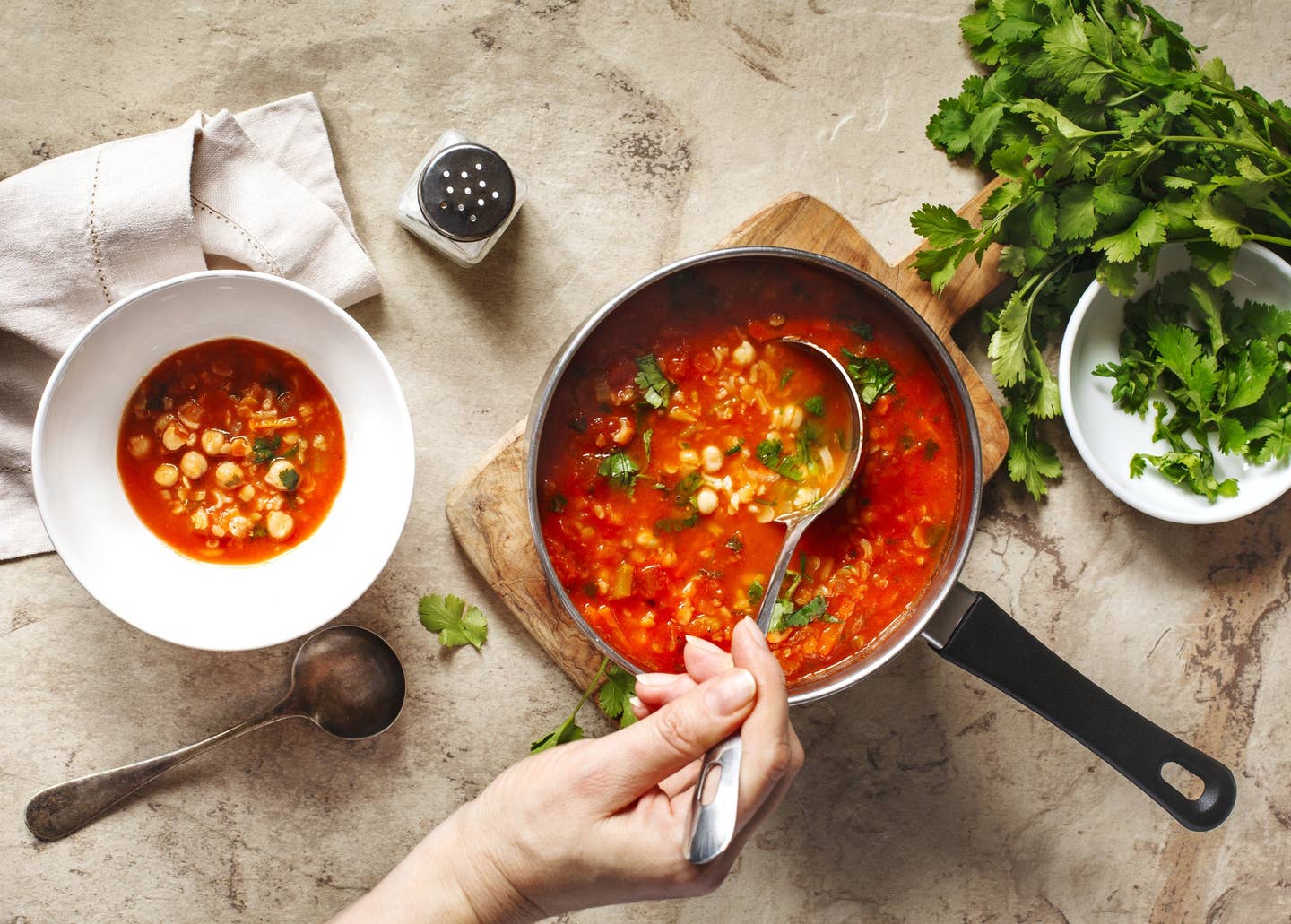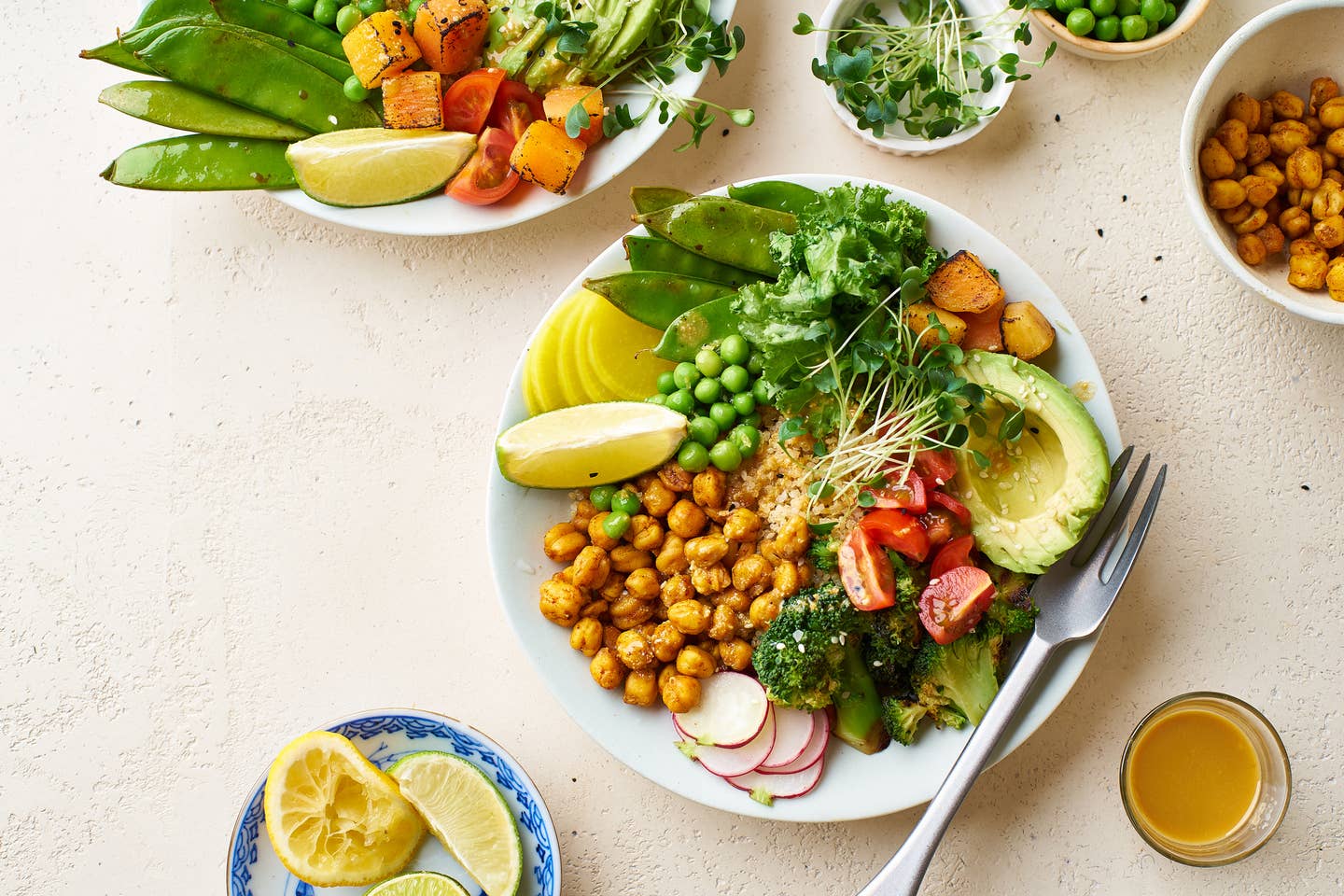
9 Tips on How to Start a Healthy Plant Based Diet From Experts
If you want to boost your immunity, lose weight, and be all-around healthier, you may be considering switching to a plant-based diet, but the question is: Where to start? Luckily, when you find reliable experts and resources it makes the transition not only easy but enjoyable. With these nine tips on how to start a healthy plant-based diet, you will ease into it, save money at the supermarket, and feel full while eating healthy, nutrient-dense foods.
Everyday Health, an online publisher with the mission to inspire and enable wellness, recently hosted a panel of experts on everything there is to know about starting a plant-based diet. The three experts included.Dr. David L. Katz, Preventive Medicine specialist, Marisa Moore, Registered Dietician Nutritionist and Lucy Danziger, Editorial Director of The Beet. Each of them offered easy, helpful advice about how to start your plant-based eating journey, including where to get your protein and the importance of fiber in your diet Here is everything you need to know about starting a plant-based diet and loving it.
1. Plant-based diets are one of the most inexpensive ways to eat.
A plant-based diet is as cheap as you make it and can even be done on a strict budget says Marisa Moore, RD. Her advice: Take the time to plan your meals and how to maximize the groceries you are buying. "The best thing you can do is buy in bulk," says Moore. Buying in bulk also means you can make your meals in bulk and then refrigerate what you don't eat right away and use it throughout the week or even freeze it for the following weeks. Use the bulk items, such as peas, chickpeas, beans and turn them into soups, veggie burgers or dips."
She also pointed out that canned beans are typically a little more expensive, so decide if you would rather spend a little more to save time you can do that too. If you're on a strict budget, you can either save time or save money, but that's usually the trade-off.
Moore's advice is to shop seasonally and be flexible about the produce you eat from week to week, because not only is what's in season cheaper but the nutrients are higher when the produce is local and in season. If you prefer out-of-season produce, head straight to the frozen section since frozen fruits and vegetables have almost the same nutrients as fresh, but the price tag of frozen foods is cheaper than buying them fresh and out of season.
2. Increase your fiber uptake over the recommended allowance of 5 servings a day.
Americans aren't eating enough fiber, even if you are meeting the recommended daily allowance (that the USDA has advised us to eat, which is five servings of fruits and vegetables a day, or about 25 grams for women and 39 grams for men, says Dr. Katz. His recommendation is to see that as a lower limit and try to well exceed it for your healthiest results. Fiber is also filling and gives you a better chance of staying on track if weight loss is the goal, he adds. "Eating [the RDA] recommendation is actually the minimum amount of fiber you should be getting daily: Eat more fiber than the entry-level," and shoot for 7 to 9 servings a day, says Dr. Katz. Actually, it's not just about the fiber in these fruits and vegetables, but also the phytochemicals and antioxidants that come with the fiber. So when you get all those fruits and vegetables you are also getting the micronutrients -- some of which don't even have a name but we know are good for your body and provide the necessary nutrients to feel your best.
3. Where to get protein? Fall in love with "pulses," such as chickpeas, beans, and peas.
Pulses, which are basically the family of legumes that we think of as beans and lentils and chickpeas and peas, are great sources of protein, fiber, and iron in a plant-based diet, says RD Moore. "Even if you aren't a fan of all pulses, make sure to get creative with the ones you do like, such as lentils, and explore different spices and herbs," recommends Moore. Here is a list of the top 15 legumes with the most protein per serving.
To make legumes more interesting, Moore suggests you add seasoning in the form of spices. "The spices and herbs you use add another level of nutritional benefits, such as antioxidants and anti-inflammatory properties," she says. "Take a minute to compile your grocery list and make sure there is a variety of plants, spices, and herbs on it." Turmeric is one such highly beneficial spice but there are several with health benefits that help to lower inflammation. As for lentils, Moore adds that there are several types and if you want variety in your food, you can try any number of lentil varieties to make soups, stews, salads, and more, and never get bored.
4. Skip Processed and add more whole foods that are grown in nature to your plate.
The point of going plant-based is not to add dairy-free ice cream or potato chips to your diet and call yourself plant-based. Instead, fill your plate with as many fruits, vegetables, seeds, nuts, and whole grains, says Danziger. "You want to buy as fresh as possible and choose anything that looks as close to the way it looked when it grew in the ground," she adds. "It's important to buy whole grains that are as unprocessed as possible, such as wild rice quinoa or barley because when it gets processed is when it loses all its nutrients."
5. Eat more fiber-filled foods like fruits and vegetables to lower your risk of disease.
A high-fiber diet high in fruits and vegetables has been linked to lowering your risk of disease. Dozens of recent studies have shown a diet high in plant-based whole foods lowers the risk of all diseases, such as heart disease, cancer, diabetes, and more, Danziger points out.
Fiber helps develop a healthy gut, and what happens in your gut, ultimately affects your whole body, which is why everyone is obsessed with probiotics and the microbiome. "Even if you don’t cut out all animal products, start your meals with a big green salad filled with legumes, lentils, edamame, avocado, and quinoa," Danziger recommends.
A loaded vegetable salad will fill you up and you won't even want what you might have eating for lunch on days before you went plant-based such as the chicken salad or the dinner you used to think of as a normal protein source like steak. The more you fill up on plant-based high-fiber foods the less you want those animal products that are full of unhealthy saturated fat. The high-fiber salad will keep you full and help kickstart digestion and a healthier gut, which actually leads to disease prevention.
6. If it comes in a bag, it's most likely not good for you. It's that simple.
When you go plant-based you usually are trying to be healthier. Avoid processed foods that are sealed in the bag. Potato chips are one of the most processed foods in the supermarket. Instead of heading down the junk food aisle, head over to the produce aisle and grab potatoes. Danziger suggests cutting a potato in thin slices, bake it and you have a healthier potato chip. "That will allow it to keep more of the minerals that the potato absorbed in the ground.
7. Skip counting calories and instead eat foods rich in nutrients until you are full.
Eating a balanced diet doesn't mean counting calories or weighing your food the way some diets used to require. Rather, fill your plate with nutrient-dense whole foods such as dark leafy greens and vegetables, whole grains and legumes, and eat until you are full. Eating more foods rich in nutrients, such as broccoli and beans, allows you to feel fuller faster, therefore eating fewer calories overall, says Dr. Katz.
When assessing the quality of the food you eat, remember, that you don't need animal products to get protein since the cow was able to get everything it needed from a plant-based diet. So we also can survive quite well on a plant-based diet. The protein in the foods we eat comes to us from plant-based foods like vegetables. "If we are what we eat, then the food that we eat is also what they eat," explains Dr. Katz. By simply shifting to a more whole foods diet, you are eating a more optimal and balanced diet and skipping the animal fat which is what causes heart disease.
8. Be mindful of your Iron, B12 and Omega-3 levels when switching to plant-based.
Switching to a plant-based diet means being more aware of the vitamins and nutrients in your food and making sure you get enough of the essential vitamins that can be scarce on a plant-based diet. Certain vitamins like iron, B12, and Omega-3 fatty acids are more available when eating animal protein. When meat and fish are cut out of your diet, you need to either eat whole foods that are rich in these vitamins or take supplements says Moore, the RD. You can still get these nutrients on a plant-based diet, but you need to eat a greater amount of these vitamin-rich foods to ensure you are meeting your daily needs.
Great sources of B12 include fortified grains and nutritional yeast. You can reach your Omega-3 daily goals by eating hemp seed, walnuts, microalgae or flaxseeds. A nutrient-rich diet means combining your foods in a creative way, Moore suggests. "Add iron-rich foods like spinach with Vitamin C foods [like tomatoes] to boost your iron absorption."
9. Eat more foods high in soluble fiber to optimize the immune system response.
As important as insoluble fiber is, since it's the fiber that helps move food through your intestines, you should also prioritize soluble fiber as well since it's the fiber your body can break down into the food. Foods high in soluble fiber include dried beans, oats, barley, apples, peas and potatoes, and more. "Soluble fiber slows the entry of fats and sugars into the body," says Dr. Katz, "while stabilizing hormonal regulation of immune system response." That means if you eat pasta without soluble fiber, your insulin will spike [which you don't want], but if you add peas to your pasta, it will blunt the spike and optimize the immune system response [which you do want]. The wider variety of fiber in your diet by adding fruits and vegetables, seeds, and nuts, the more antioxidants in your body, which also boosts immunity.
More From The Beet






